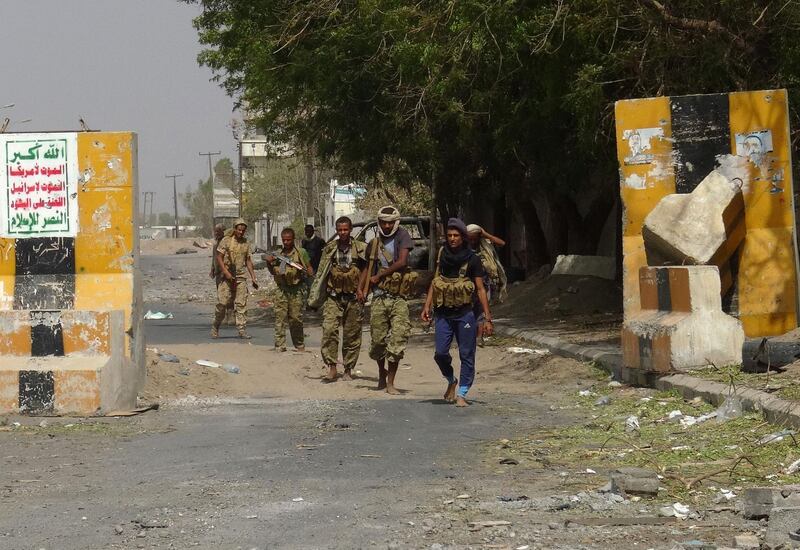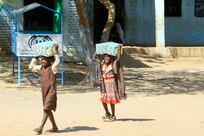Yemen's port city of Hodeidah was relatively calm on Monday after fierce clashes on Sunday between government forces and Houthi rebels in several areas, including fighting near the main hospital that caused substantial damage to the building and forced patients and staff to flee in panic.
"The hospital building was badly damaged. Projectiles and shrapnel fell on the roof and destroyed the hospital's water tanks," Dr Khaled Suhail, the executive director of Al Thawra hospital, told The National.
Several patients were injured as fighting raged around the hospital, Dr Suhail said. Those who were able to do so fled in panic, and female staff were evacuated from the hospital.
Fighting between the Iran-backed Houthi rebels and government forces backed by the Saudi-led Arab military coalition flared up around Hodeidah in early November. Heavy fighting was also reported near Hodeidah's university, in the 7 July district and the Al Khamseen Street area on Sunday.
Dr Suhail said three children were among the four people brought to the hospital with injuries caused by falling shrapnel from anti-aircraft shells.
The hospital also treated fighters from both sides but declined to provide figures. A tally of casualties compiled by Agence France-Presse said 110 rebels and 32 loyalist fighters were killed in Sunday's clashes.
Dr Khaled Atiya, the hospital's media officer, said cardiac care room was damaged and a patient seriously injured when shrapnel pierced the roof.
"Very intense clashes flared up near the hospital and the anti-aircraft fragments were falling heavily," Dr Atiya told The National.
"The shrapnel destroyed the front doors and some rooms in the hospital, spreading fear among among the staff and the patients. The female staff were terrified, they kept shouting and crying. I saw patients carrying their intravenous drips running out of the hospital to find shelter."
________________
Read more:
[ Heavy clashes as Houthis dig in near Hodeidah university ]
[ Defected Houthi official says militants drawing their 'last breath' ]
[ Arab Coalition ends US refuelling deal in Yemen ]
________________
Dr Suhail said the situation around the hospital was calm on Monday but there were fewer patients arriving for treatment and the female staff still could not resume work after their experience on Sunday.
"We used to receive more than 2,000 patients a day but the number dropped as the fighting approached the hospital," he said
Dr Atiya said Al Thawra was the main hospital not only for Hodeidah but also for three neighbouring provinces.
"The hospital receives patients from Mahwit, Raymah and Hajjah and injured fighters from all the conflict parties. We are providing humanitarian service so we strive to keep neutral," he said.
He said the hospital was also dealing with an increase in cholera patients after fresh outbreaks of the disease in some districts of Hodeidah province, with more than 1,500 cases in the past two months.
"We receive large numbers of patients from Bura district in western Hodeidah and Al Zaiydia in north Hodeidah, which are experiencing a massive outbreak of cholera," Dr Atiya said.
The disease surfaced in 2016, the second year of Yemen's civil war, as a result of crumbling health and sanitation infrastructure. There have been nearly 250,000 suspected cases and 246 deaths from the disease so far this year, according to the World Health Organisation.
The outbreak is part of a wider humanitarian crisis caused by the war in Yemen, including widespread malnutrition, that has prompted an international push for a new round of UN-brokered peace talks before the end of the year.





